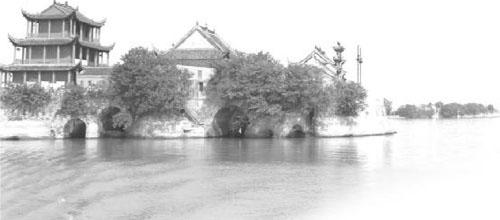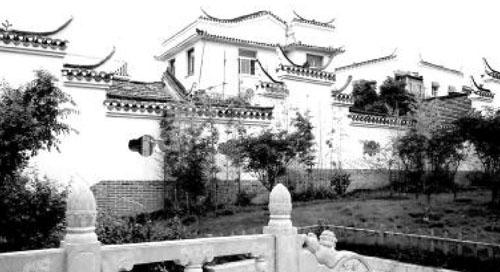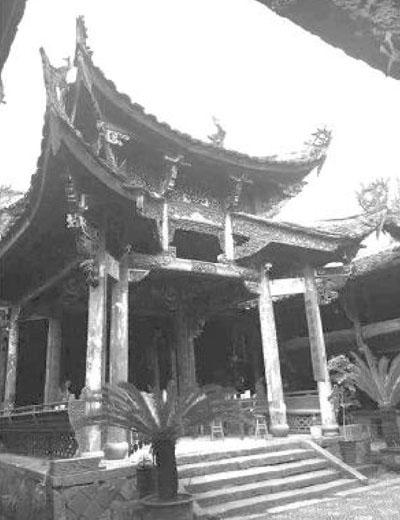Pay A Visit to Hefei
2019-05-31



Lying between the Yangtze River and Huaihe River, Hefei is the capital city of Anhui Province. Covering an area of 7,266 square kilometers(about 2,805 square miles), it is the key tourist city of the whole province and the best place to know about the brilliant Anhui culture.
The ancient Hefei City, with a long history of over 2,000 years, was also nicknamed‘Luzhouor‘Luyangbecause it was under the governance of Luzhou prefecture in the Ming (1368 -1644) and Qing (1644 - 1911) dynasties. The city is the political, economic and cultural center of Anhui Province and has played an important role in commercial transactions since ancient times.
It is a scientific and educational city and boasts of many talents both past and present, such as the famous upright officer Lord Bao in Northern Song Dynasty (960-1127) along with the Nobel Prize for Physics winner, Yang Zhenning, whose hometown is Hefei. The University of Science and Technology of China, and the Branch of the Chinese Academy of Sciences are both located here. There is no doubt that talented people in the city are foremost in China. It is a beautiful city with good surroundings - the Huaihe River flows to its north, to its south is Yangtze River, and to its south- east lies the Chaohu Lake with its expansive blue waters. As is known, every city in China has a city tree and a city flower and, in the case of this city, the Yulan tree is its city tree and the sweet scented osmanthus, pomegranate flower is its city flower.
Due to its good surroundings and long history, many natural and cultural places of interests such as Chaohu Lake, Memorial Temple of Lord Bao and Sanhe Ancient Town can be found here.
Chao Lake
Chao Lake, also known as Chaohu Lake or Chao Hu, largely about Anhuis capital city Hefei, resembles a bird nest or “niao chao” in Chinese, hence its name Chao Lake. The lake is acclaimed as one of the five largest fresh water lakes in China, across three counties in Hefei in the middle of Anhui Province. Chao Lake has charms of its own namely Zhongmiao Temple, Mushan Island, Oxhorn Daxu, and Yinping Mountain.
Chao Lake lies at the downstream of Yangtze River system and there are 35 feeder rivers. Therefore, it extends 54 kilometers (34 miles) from west to east and averages 15 kilometers (10 miles) from north to south. When there is adequate rainfall, the water surface area can reach about 825 sq. kilometers(320 sq. miles). The lake is mostly calm and clear; when visitors walk along the embankment, a waft of cool air caresses their faces. Reeds at human height waver in the breeze. The beauty of Chao Lake is added to by its surrounding mountains. With its vast water and verdant mountains, the lake is a magnet to writers and scholars throughout Chinese history.
The huge lake is surrounded by lots of tourist attractions. On its north are Zhongmiao Temple, Binhu Wetland Forest Park, Changlinhe Ancient Town, Moonlight Bay Park, and Guishan Park. Oxhorn Daxu Ecological Garden is located on the west of the lake while Yinping Mountain lies to the east. On the southern bank you will find Sanhe Ancient Townand Shengqiao Ancient Tomb.
At the north bank of the lake stands Zhongmiao Temple on a huge rock protruding over the lake. Initially built in the Han Dynasty (202BC – 220 AD), it has been renovated for several times. The present one dominates the huge rock and faces water on three sides. Along the 75 meters (80 yards) long central axis there are three grand buildings, including Gate Palace, Mahavira Hall, and Pavilion of Buddhist Sutra.These bright red temples are quite eyecatching against blue water.
Facing Zhongmiao Temple is Mushan Island at the center of the lake, about 3.5 kilometers (2 miles) from the temple. You can reach the island by yacht or a sightseeing ferry, which dock north of Zhongmiao Temple. Mushan Island is an oval ait that covers an area of 85 hectares (210 acres). From the distance, it resembles either a snail or an oasis in the vast water. Now there are three pavilions and three gentle hills on the island. On the top of the highest peak someone has build the seven story Wenfeng Tower about four hundred years ago. It hosts 802 statues of the Buddha and 25 pieces of stone tablets.
Mushan Island is the largest island of Chao Lake. The ait was formed as the result of a violent volcanic action a hundred million years ago and a legend is associated with it. It is said that when the land collapsed and turned the place into a lake, an old lady named Jiao Mu forewarned the villagers of the danger, and then Jiao Mu ran to the mountain and survived the disaster. In her memory, the mountain is called Mu Shan and she is honored in the Zhongmiao Temple. The lake is also named Jiao Lake.
Memorial Temple of Lord Bao
Lord Bao (999-1062), named Bao Zheng, was a renowned officer in the Northern Song Dynasty (960 - 1127). He is well respected because of his excellent personality, fair-minded judgments and strict family education. Many temples were built to commemorate his death. Among them the Memorial Temple of Lord Bao in Hefei is the most famous. It lies in Baohe Park in the southeastern part of his hometown, Hefei City. Its current appearance is the result of reconstruction in the Qing Dynasty (1644 - 1911).
Entering the beautiful park, walk-ing through the stone gate and along the small path by the lake, you will find it in front of you. It is a typical compound with houses around a courtyard. There is a incense burner donated by a pilgrim standing in the yard. The main palace with five halls is the highlight of it.
In the center of the palace is a huge seated statue of Bao Zheng, measuring about nine feet. He is holding a scepter in one hand and a pen in the other. The dignified, serious expression on his face represents his impartial and incorruptible moral character. Four bodyguards stand on two sides of him. Instruments of torture, which are recognized as symbols of justice are on the left of the statue. A stone portrait of Bao Zheng is inlayed in the right wall of the hall. In the eastern and western halls display items related to him.
To the east of the hall is a hexagonal pavilion with a well in it. There are stone inscriptions on the wall of the pavilion which relate that a corrupt officer once got a terrible headache as soon as he drank water from the well, but some kindhearted persons tasted the water and found it as sweet as honey. Due to this the well is also called Honest Well. To the west of the hall is Liufang Pavilion where, it is said, Bao often studied when he was young.
There is an inscription stone in it which was found in the tomb of Bao Zheng in Daxingji County, Hefei City in April, 1973. This inscription stone records detailed information of Baos whole life that is helpful for a further understanding of him.
The sites of the newly built Waxwork Museum and Cultural Gallery of Lord Bao deserve your visit as well.
Sanhe Ancient Town
Located 32 kilometers (20 miles) from Hefei City, Sanhe Ancient Town with a history of 2,500 years is a typical water town in the lower reaches of the Yangtze River. “Sanhe” means three rivers. It is named so because Fengle, Hangfu and Xiaonan are three rivers that right run through it. Occupying an area of 2.9 square kilometers (717 acres), the town is full of buildings built in Ming and Qing styles. The white walls, gray roofs, red pillars, and the streets paved with smooth bluestones unveil a beautiful painting for all visitors. The major attractions inside the town include:
Tongxinglong
Shop of Liu Brothers
Sanhe Ancient Town was the biggest wharf in the region making it a very prosperous business place during ancient times. The town had many large shops and Tongxinglong Shop of Liu Brothers was one of them. It was managed by two brothers of the Liu Family engaging in the trade of rice, cloth and salt. The three words “Tong Xing Long” mean that business will be prosperous because of family harmony. There are 32 rooms consisting of 5 courtyards and 8 wings. The first courtyard has a two-storey wooden house; the second one is mainly a typical south- ern China building; the third one is the hall where hosts entertain guests; the fourth one is the incense house where the owners worship their ancestors; the fifth one is the living house that occupies 700 square meters (837 square yards).
Dafu Mansion
Dafu Mansion is a private house belonging to civil service officials in the Ming and Qing Dynasties. “Da Fu” is a high official position in ancient times. The mansion mainly displays traditional Chinese furniture and decorations including a plaque written by Zhu Feng, a high official cherry wood table, padauk round-backed armchair, rosewood round-backed mchair, machilus cabinet, phoebe Babu bed and old style Chinese portrayals of early Qing Dynasty (1644 -1911 AD).
Former Residence
of Chen-Ning Yang
Chen-Ning Yang is a very famous scientist in China and a Nobel Prize Winner for Physics in 1957. Chen-Ning Yangs mother was born in Sanhe Ancient Town and she came back here with Chen-Ning Yang to escape war in 1937. Chen-Ning Yang sought knowledge here. Nowadays some valuable pictures and literature materials are displayed in the Former Residence of Chen-Ning Yang.
Crane Cottage
Crane Cottage is former residence of Liu Bingzhang, a famous general in the late Qing Dynasty. He had hundreds of houses in Sanhe Town, but Crane Cottage is only one still preserved today.
Xiangu Hall
Shi Daosheng, one of the owners of a famous food company, believed in“good people will be rewarded”, so he was honest and always helped others. He and his families worshiped Buddha. Influenced by Shi Daosheng, a rich businessman who was a good friend of Shi, called on other businessmen and donated money to build Xiangu Hall. Xian Gu is a female immortal. It is said that a rich man felt disappointed because he did not have daughter; he and his families prayed to Xiangu and his wish finally came true. Therefore, Xiangu Hall attracts a lot of people to visit.
Peach Blossom Island
Peach Blossom Island located at the confluence of the Hangfu River and Lefeng River is a very beautiful land occupying 0.2 square kilometers (50 acres). The shape of the island is triangular and there are peach gardens and vineyards. When spring comes, Peach Blossom Island becomes a sea of peach blossoms making it feel like a fairyland.
Wangyue Pagoda
Wangyue Pagoda is an ancient seven-storey pagoda that is 37 meters(120 feet) high. “Wang Yue” means looking at moon, expressing the feelings of missing ones hometown. The first floor of Wangyue Pagoda displays valuable folk art treasures; the second one shows tablets of different dynasties; the third one shows some ancient furniture from the Qing Dynasty; the forth one shows some stone-carvings; the fifth one displays tablets endowed by the government; the sixth one shows living goods of ancient times; the seventh floor shows Buddha statues of different dynasties. By the side of Wangyue Pagoda, there is a bridge called “Wangyue Bridge”.
Dong Yinchu Bibliography Exhibition Center
Dong Yinchu was born in Sanhe and he is a famous Chinese statesman and social activist. Dong Yinchu Bibliography Exhibition Center can be divided into six exhibitions. The first exhibition shows Sanhe Ancient Town—rich land fostering more talents; the second one displays the origin of the Dong Family; the third one displays outstanding Dong families; the forth one shows calling on people to save the nation; the fifth one is running businesses to save the nation; the sixth one shows generations of leadership.
Former Residence
of Sun Liren
Sun Liren was born in Sanhe Town and is a famous general of the Kuomintang. The former Residence of Sun Liren is a house in typical Huizhou style and has two courtyards. The first courtyard shows some pictures about Sun Lirens life story; the second one is a two-storey house and its first floor is the reception room.
In addition, there are some other small attractions worth visit, such as Ancient Amusement Hall and Rootcarving Exhibition.
